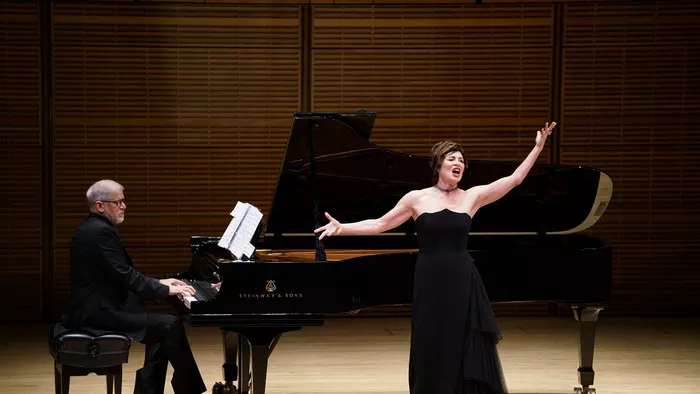The Classical era, spanning from approximately 1750 to 1820, was a period of remarkable musical development and innovation. Among the many forms that flourished during this time, the sonata genre stands out for its significance and lasting impact on Western music. This article delves into the various mediums for which sonatas were written during the Classical era, providing a thorough understanding of their characteristics and historical context.
I. Introduction to the Sonata Genre
The term “sonata” originates from the Italian word “sonare,” meaning “to sound.” In its early usage, it simply referred to a piece played on instruments as opposed to one that was sung. However, by the Classical era, the sonata had evolved into a distinct and sophisticated form, characterized by a specific structure and style.
II. The Sonata Form
Before exploring the mediums, it is crucial to understand the sonata form, which typically consists of three to four movements with contrasting tempos and characters. The first movement is usually in sonata-allegro form, featuring an exposition, development, and recapitulation. The subsequent movements may include a slow movement (adagio or andante), a minuet or scherzo, and a lively finale (often in rondo or sonata-allegro form).
III. Mediums for Sonata Music
1. Solo Keyboard Sonatas
One of the most prominent mediums for sonatas during the Classical era was the solo keyboard, particularly the piano. Composers such as Wolfgang Amadeus Mozart, Ludwig van Beethoven, and Franz Joseph Haydn contributed significantly to this repertoire.
The Piano’s Rise: The piano began to replace the harpsichord and clavichord as the preferred keyboard instrument due to its dynamic range and expressive capabilities.
Beethoven’s Contributions: Beethoven’s 32 piano sonatas are considered some of the most important works in the genre. They exhibit a wide range of emotions, technical challenges, and structural innovations.
Mozart and Haydn: Mozart and Haydn also composed numerous piano sonatas, each bringing their unique styles to the genre. Haydn’s sonatas are known for their wit and inventiveness, while Mozart’s are celebrated for their lyrical beauty and formal perfection.
2. Violin and Piano Sonatas
The combination of violin and piano was another popular medium for sonatas. These works typically feature a partnership between the two instruments, rather than a soloist with accompaniment.
Collaborative Nature: In these sonatas, the violin and piano often engage in a dialogue, with both instruments contributing equally to the musical conversation.
Notable Composers: Beethoven’s ten sonatas for violin and piano are notable examples, showcasing the evolution of the genre from Classical elegance to Romantic expressiveness.
Mozart’s Contributions: Mozart also composed a significant number of violin and piano sonatas, known for their balance and clarity.
3. Cello and Piano Sonatas
Though less common than violin sonatas, cello and piano sonatas also hold an important place in the Classical repertoire.
Beethoven’s Influence: Beethoven’s five cello sonatas are seminal works in this genre, pushing the technical and expressive boundaries of the cello.
Other Composers: While Beethoven’s cello sonatas are the most famous, other composers such as Luigi Boccherini and Joseph Haydn also contributed to this medium.
4. Wind Instrument Sonatas
Sonatas for wind instruments, including flute, oboe, clarinet, and bassoon, often paired these instruments with the piano.
Flute Sonatas: The flute sonatas by composers like Mozart and Johann Christian Bach are notable for their elegance and melodic beauty.
Oboe and Clarinet Sonatas: Although less prolific, oboe and clarinet sonatas by composers such as Carl Philipp Emanuel Bach and Wolfgang Amadeus Mozart highlight the expressive potential of these instruments.
Bassoon Sonatas: Bassoon sonatas, though rare, showcase the instrument’s unique timbre and agility.
5. Solo String Instrument Sonatas
While solo sonatas for string instruments (violin, viola, cello) were more common in the Baroque era, they continued to be composed during the Classical period.
Unaccompanied Works: These sonatas often explored the full range of the instrument’s capabilities, requiring virtuosic technique and deep musicality.
IV. Characteristics of Classical Era Sonatas
Formal Structure: The sonata form was a hallmark of the Classical era, emphasizing balance, clarity, and thematic development.
Melodic and Harmonic Language: Classical sonatas often feature singable melodies, clear harmonic progressions, and a balanced interplay between tension and resolution.
Expressive Range: Despite their formal constraints, sonatas of this period convey a wide range of emotions, from lyrical beauty to dramatic intensity.
V. The Sonata and Its Cultural Context
The popularity of the sonata during the Classical era was influenced by broader cultural and social trends.
Patronage System: Many composers were supported by wealthy patrons, who often commissioned sonatas for private and public performances.
Rise of the Middle Class: The growing middle class created a demand for music that could be enjoyed in domestic settings, leading to the proliferation of keyboard and chamber sonatas.
Technological Advances: Improvements in instrument construction, particularly the piano, expanded the expressive possibilities available to composers.
See Also:A Deep Dive into the Era of Classic Music: All You Want to Know
VI. Conclusion
The sonata genre during the Classical era was a versatile and significant form, encompassing a wide range of mediums from solo keyboard to chamber ensembles. The works of composers like Mozart, Beethoven, and Haydn continue to be celebrated for their technical mastery, expressive depth, and enduring beauty. Understanding the various mediums for which sonatas were written provides valuable insight into the musical landscape of the Classical period and the enduring legacy of this beloved genre.

